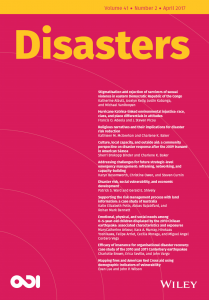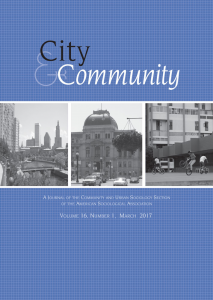The Postmodern Politics of the Sanity Rally
photos in this post by nathan jurgenson
I’ve watched mass gatherings with great interest while living in Washington D.C. From Obama’s election night and inauguration to various marches, and, of course, Glenn Beck and Jon Stewart’s rallies to restore “honor” and “sanity,” respectively. These last two, both organized by cable television personalities, brought massive amounts of people to the National Mall, so many people that these rallies might be telling us something about our current moment in American political discourse and participation. Let me describe yesterday’s Rally to Restore Sanity and argue that the politics of irony on display are more than “mere spectacle,” but potentially quite powerful.
Left, White and Bigger than Beck
Like Beck’s rally, yesterday’s crowd was partisan and mostly white. It was far less diverse than Obama’s election night celebrations or his inauguration day, a point that deserves its own analysis. It was clear to anyone who attended both Beck and Stewart’s rallies that the latter brought the larger crowd. Current estimates have yesterday’s crowd at around 215,000 people (about 2.5 times Beck’s 87,000). And, of course, Stewart’s attendees were largely on the political left.
A Postmodern Event
If you have seen any images from the event [here are some photos I took], you know that it was intended to be humorous and entertaining. Yes, there was Stewart and Colbert on stage, their shtick was good as always, but more importantly there were the many hilarious signs and costumes created by the attendees. People watching gets no better than this. The rally was indeed a site for creativity and expression. There was a somewhat incoherent “pastiche” of images presented. If there was a central theme, perhaps it was “irony” -you know, in that weird way we use it to mean “sarcastic.” This event had all the hallmarks of a more postmodern space for possibilities of all kinds, be they intellectual, artistic, humorous, etc, than just a space for political rhetoric.
But is all of this irony and humor “mere spectacle” as my friend and blogger Les Andrist states? He tries to find the meaning of the event by looking to Stewart’s words, which will fall short of being powerful becuase political rhetoric is modern politics, and this is a postmodern event. I will argue that this event followed the logic of the spectacle in a potentially subversive way by inverting its own logic from within. Analyzing such an event means looking well past the words those on stage used. It might even require moving some of our attention away from the stage, that most modern of pulpits, and out towards the crowd.
The Power of Humor
We can start by reflecting on the use of humor in the crowd. Without making this point explicitly, the hyperbolic irrationality of the Sanity Rally serves to mock those who are radical and irrational without such irony (e.g., some of the most ridiculous Tea Partiers, Beck, Palin, O’Donnell, etc). In response to media fear mongering, this rally attempted to be silly; those attending had fun during the day and danced on through the night -you don’t think the rally really ended at 3pm, do you?
Guy DeBord and the situationists in France in the 1960’s saw the blurring of entertainment and politics as dangerous, and reacted in highly political ways: riots, strikes, debate, violence, etc. However, their rejection of the logic of entertainment-politics was ultimately unsuccessful. Perhaps the Sanity Rally is a different strategy against entertainment-politics. This new strategy accepts that the logic of our moment is spectacle, and attempts to critique the system using its own logic. Sure, it reifies the logic, but it might be the best we can do to reform a political discourse out of control. The Sanity Rally was silly because the people there felt that the rest of American political discourse is increasingly a joke -remember, Stewart may be the most trusted news anchor in America. This was a massive media event lead by a comedian, ridiculous attendees were taking lots of pictures, and most importantly, it was all funny. This group of people all gathered together and ran with the idea of politics-as-entertainment, which, in effect, calls attention to precisely this trend.
Thus, it would be a mistake to dismiss the postmodern politics of irony -the dance, the signs, the costumes, the jokes, the play, the free expression- as devoid of meaning. When politics become synonymous with entertainment we can expect people to use entertainment to fight back. The joke itself is a message, and it is not trivial.
Play is Political
Instead, we should recognize that humor is an incredibly powerful tool of persuasion. Tina Fey’s famous impersonation made the very idea of Palin’s campaign look hilarious, which was potentially more harmful than if one disagreed with her. I believe the Tea-Party’s greatest limitation is not that people disagree with them substantively, but that so many Americans think they are hilarious. To be disagreed with might be tough, but to be laughed at and not be a part of the joke is debilitating.
Thus, humor is a powerful political tool. The silliness of the Sanity Rally can have powerful, substantive, real, material political consequences. If it hinders the Tea-Party, it could impact who our elected officials are, what laws get enacted and so on. In a postmodern politics, play is political.
So, was The Rally to Restore Sanity a joke or a political rally? Both. Did it make a mockery of American politics on the hallowed National Mall before an important national election? Of course, and that is kind of the point. ~nathanjurgenson.com



1520-6688/asset/Capture.jpg?v=1&s=b5076c49a7d1c5f1b9cf0dd9cd292394a3be81cc)

It’s almost as though if the politicians are going to behave like children, they are going to suffer just as much when they get picked on. Silly tea-party, they have cooties and they smell like horseshit.
There was a potentially interesting debate on Sociological Images about who attended this rally and why. One person described the attendees as over-privileged but apathetic white people, another protested that some of the mockery could be seen as directed at the protests of minorities against racism and economic oppression.
The thing is (or should be) that the Tea Party is using overheated language to protest the manner in which government is attempting to address our current economic problems. Members of the Tea Party are attempting to suggest that they are hurt by stimulus spending (and the resulting debt), as well as by the advancement of the government into healthcare and a return to financial regulation. Since members of the Tea Party are statistically mostly white, older and well off, I do not believe that most are currently suffering in this economy. We know that the unemployment rate for people with bachelor’s degree is 4.5% right now.
By contrast, people who do not have high school degrees suffer an unemployment rate of more than 10%, and high school graduates I think are around 10%. I would be perfectly happy to hear these groups scream about the situation they find themselves in.
Now, I suspect Jon Stewart’s audience is mostly white, affluent, educated and also very liberal. Stewart himself makes fun of his own whiteness using black members of his cast. I want to, and do believe that Stewart would encourage minorities and/or the very poor to yell and scream about their misfortune, and I would hope he would avoid being condescending by making jokes at the expense (so to speak) of the poor.
So what makes the Rally for Sanity interesting is that it is supposed to counter the fake pain that Tea Party members scream about, but the Rally is taking some heat from some quarters because it might suppress the expression of the real pain being felt by the voiceless in our society
You should actually watch the rally. Jon’s closing remarks aren’t apathetic. There is no lack of outrage for the unemployment situation.
Also I don’t think it is fair to say that because the rally attendee’s were mostly white that they must also not care about unemployment.
Ed, yes, very interesting. I tried to follow the Soc Images discussion in the comments, but was a bit overwhelmed. I noticed the fundamental debate that seems to follow this rally: do you think that (postmodern) activism on the level of signs/symbols/humor/irony is right and/or efficacious or not? Sort of the old materialism/idealism debate.
What you are pointing to is an issue I did not take up very much in my post that deals with the race/class issues at Beck’s and Stewart’s rallies. What about the Sanity Rally kept non-whites away?
I think it makes sense that ironic politics would be more associated by those whose stakes are lower (whites). For liberal/progressive whites, structural inequalities are largely symbolic, something imagined but not lived in a real, material sense. But those subordinate groups who live inequalites in a that very real, material way might favor protest that reflects clear positions and activities.
[all of this is not to say that humor/dance/etc have not been tools wielded by the disenfranchised. they certainly have. but the Sanity Rally was a space for ONLY this. it was so overwhelmingly ironic that those favoring material (modern?) forms of activism might have stayed away] ~nathan